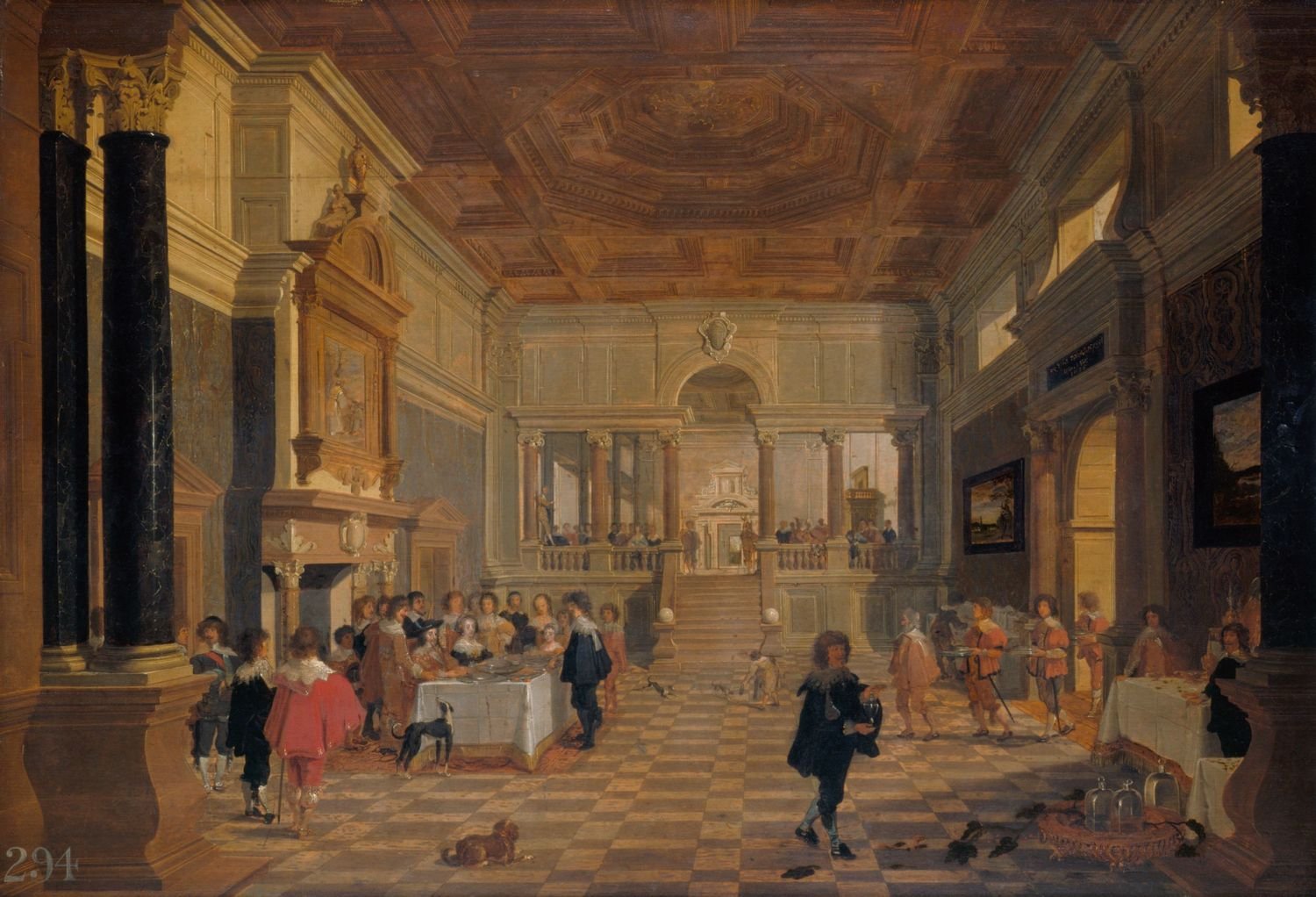
Public Dining in the Reign of Charles II (1630-1685)
The ritual of public dining and its trappings in the time of Charles II
Standing salt
1572-73RCIN 31773
Ceremonial standing salts, often of elaborate and intricate construction, were used on royal and aristocratic dining tables from the medieval period into the eighteenth century to mark the status of those dining by reference to their position at table in relation to the salt (i.e. 'above' or 'below').
Charles II's cypher engraved under one of the feet suggests that the salt was acquired around 1660, probably from Sir Robert Vyner, who held the warrant to replace the royal plate and crown jewels sold or melted during the Interregnum (1649–60).







